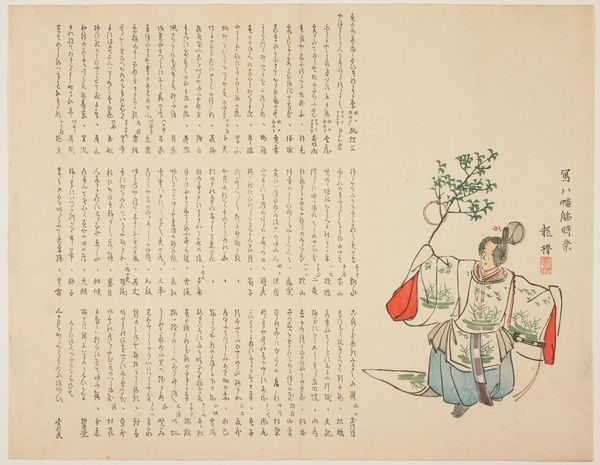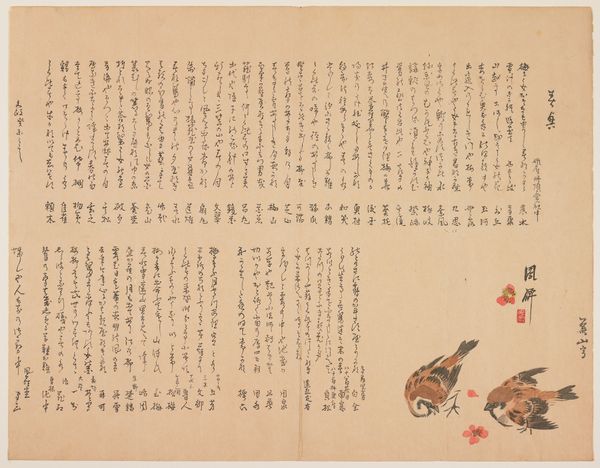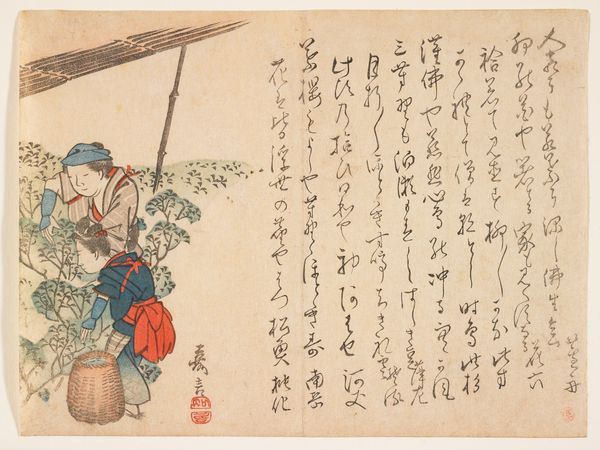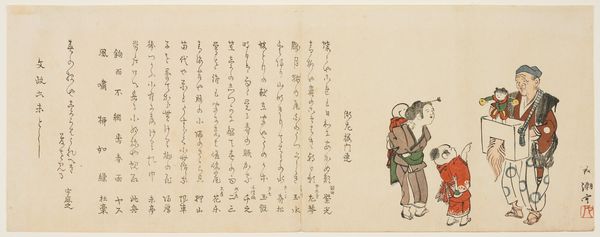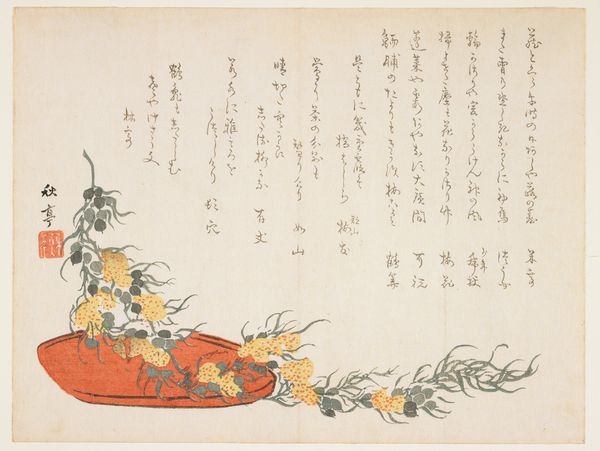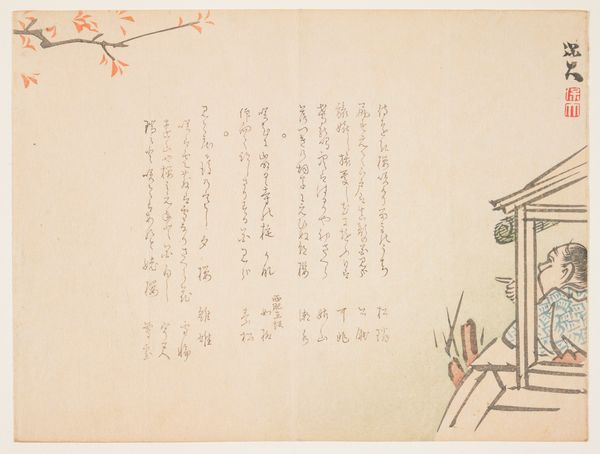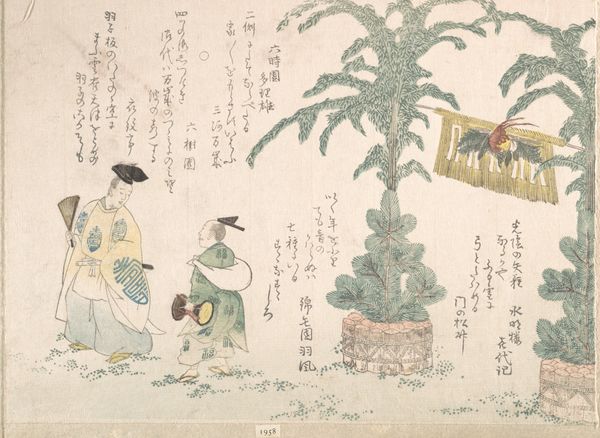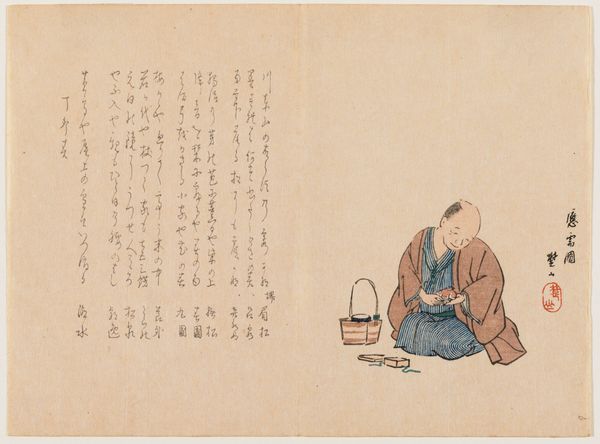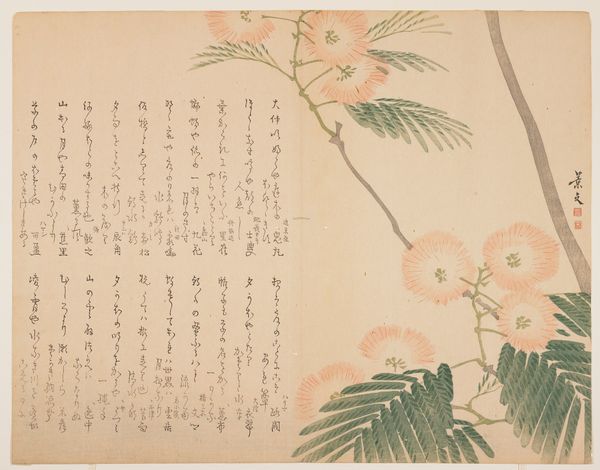
print, ink, woodcut
# print
#
asian-art
#
landscape
#
ukiyo-e
#
ink
#
woodcut
#
genre-painting
Dimensions: 15 x 19 1/4 in. (38.1 x 48.9 cm) (image, sheet)
Copyright: Public Domain
Editor: We're looking at "Flower Vendors," a woodcut and ink print by Matsumura Keibun, from around 1818 to 1829. There's so much text inscribed on it. I’m struck by the ordinary people, the vendors, juxtaposed with what appears to be poetry. What stories are being told here, culturally? Curator: That's a wonderful observation. Ukiyo-e prints like this one, though often admired for their aesthetic qualities, also served as powerful documents of everyday life in the Edo period. They captured the vibrancy of a rising merchant class and their embrace of pleasures that were previously only accessible to the elite. Consider the positioning of the vendors within the composition, and how that reflects their social standing. Editor: I see, the artistry elevated these scenes from common life to a valuable portrayal. Are you saying this challenges societal norms by representing these vendors? Curator: Exactly! By depicting these “commoners," Keibun subtly critiques the strict social hierarchies of the time. The act of recording their lives, their trades, their engagement with the marketplace – it’s a profound political statement about who and what is worthy of artistic representation. Think about who was traditionally being painted at the time, and the absence of the working class. This artwork fills that void. What does that absence and then presence of these characters mean to you? Editor: It sounds like it’s empowering. Now, thinking of contemporary ideas of identity and representation, it is important who gets the chance to have their stories shared. Curator: Precisely. Understanding Ukiyo-e prints through this lens allows us to recognize the ways in which art can be both a reflection of and a challenge to prevailing social power structures. Editor: I've definitely learned that this work reflects the intersectionality between everyday life, artistry, and social status. I can see so many conversations we can explore within this single image!
Comments
minneapolisinstituteofart almost 2 years ago
⋮
Matsumura Keibun, one of the leading artists of the Shijø school, lived his whole life in Kyoto and spent the better part of it in the Shijø district, after which the group took its name. Located in the city center and containing the pleasure quarter Gion, Shijø was a flourishing amusement area. The district was known for its fashionable restaurants and teahouses frequented by artists and poets. The poetry society that commissioned Keibun to design this print may have had their New Year's gathering in one of these popular establishments. This print shows an itinerant flower vendor and his assistant. Included among their offerings are camellia, nandin, and gleichenia fern, all typically used in the New Year's decorations. Thus, Keibun tastefully conveys a sense of the season in this charming image.
Join the conversation
Join millions of artists and users on Artera today and experience the ultimate creative platform.
